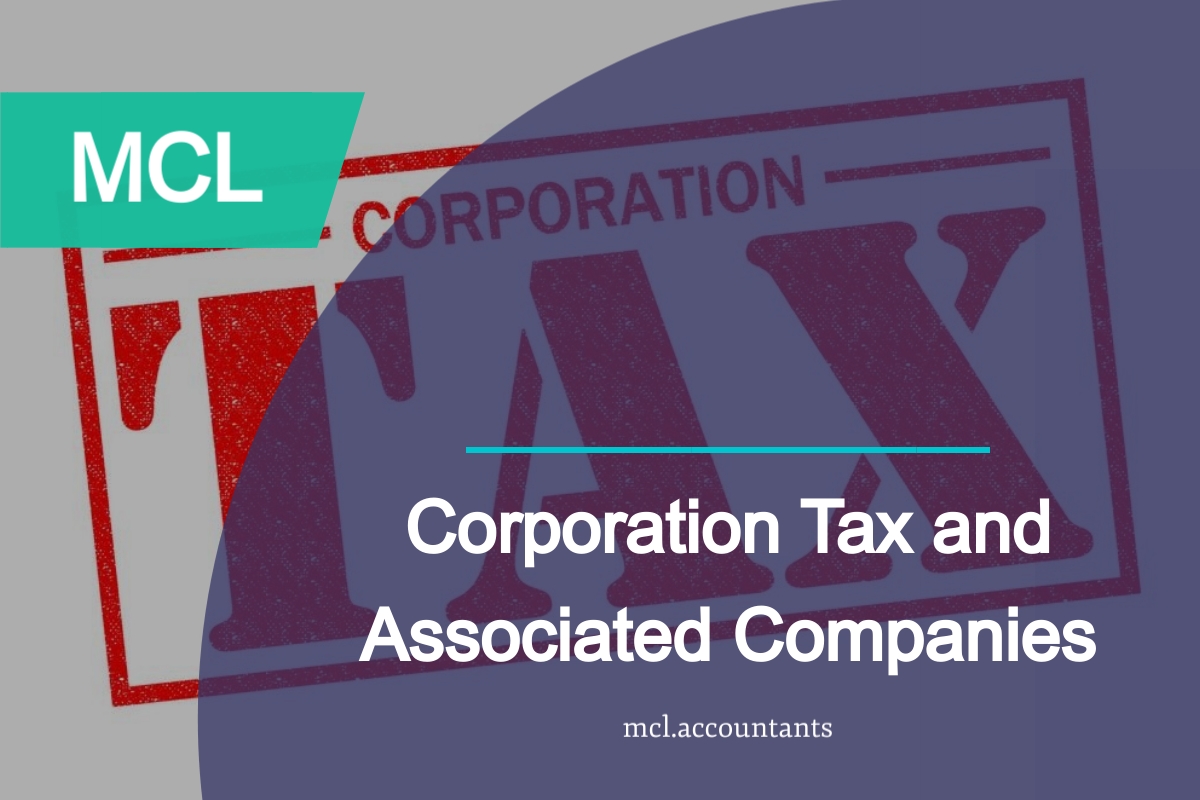Corporation Tax and Associated Companies
14/10/2023 - 6 minutes readCorporation tax and Associated companies is a frequently asked question by clients who own or control more than 1 company. Where two or more companies are “associated” with each other, the Corporation tax limits are divided by the number of companies concerned.
Corporation tax and associated companies rules have been newly reintroduced and they apply from 1 April 2023 in the context of the small companies’ rate of corporation tax. We cover this in further detail in a separate article here.

We have used a practical example below to provide clarity on the new Corporation tax and associated companies rules.
Corporation Tax and Associated Companies Example
I am dealing with the accounting year of 31 August 2023. My client’s company is owned 100% by Paul. He also has 75% ownership of another company with an unrelated business partner, but due to recent hardship, this business stopped trading on 1 May 2023 and is currently dormant.
Paul also has two daughters, Tara and Gemma. They each have their own company but in completely different industries. To help Gemma when she started the business, Paul loaned £200,000 personally directly to Gemma’s new company. To provide similar assistance to Tara, he allowed her to trade from his commercial premises rent free.
From 1 April 2023 under the new Corporation tax and associated companies rules, there will be a direct impact on the rate of corporation tax that would be applicable. It is therefore important that the new associate rules are considered carefully.
The main rules defining associate companies are set out in section 18E Corporation Tax Act 2010 (CTA 2010). These apply when two companies are:
1. under common control; or
2. one company has control of the other company.
Considering Paul’s position, he would have two companies under common control, his wholly owned company and the company with his business partner as Paul has a shareholding in excess of 50%. It should be remembered that shareholding is only one means of control – see CTM60210.
It should be noted that under s18E (3) CTA 2010, a company can be excluded as an associated company if it is not carrying on a trade.
However, the important wording within the legislation is “at any time in the accounting period.”
Therefore, as the trade only ceased on 1 May 2023, it would have been trading at some point during the year ending 31 August 2023, which would still include it as an associate company.
At face value, it would appear that Paul would have two associate companies for the year ending 31 August 2023. However, when we are considering Paul’s ‘control’, s18G CTA 2010 also includes Paul’s associates. Under s448 CTA 2010, Paul’s associates would include:
– spouses and civil partners;
– blood relatives; and
– trustees or settlors of trust beneficiaries.
Therefore, Paul’s daughters Tara and Gemma and their companies would also have to be considered within these new rules.
Under the new Corporation tax and associated companies rules, Paul’s company would have four associate companies unless you can show that his daughters’ companies are not substantially interdependent on Paul or his company. HMRC’s commentary on this can be found at CTM03950. But the main factors that are considered when determining substantial commercial interdependence are: financial, economic and organisational.
If we first look at Tara and her company, they are potentially caught by the organisation’s interdependence due to trading from the same premises. But it is important to take into account that there is no definition of substantial for these tests.
Based on HMRC’s commentary in CTM03950, the degree and period of interdependence would need to be considered. In addition, the fact that Tara’s company is not charged rent could go to show that it is dependent on Paul’s company for use of the premises and therefore it is much more likely that this would be caught as an associated company.
Moving on to Gemma’s company, the loan that Paul made would fall under financial interdependence and therefore until the loan is repaid, this would provide indirect financial support between Paul’s company and Gemma’s and therefore could be considered to be associated. As previously mentioned, you would need to consider if this was substantial or not, but that is very subjective.
Each case will depend on its own specific circumstances and therefore a much more detailed review of the links between all these companies would have to be undertaken to be able to prove there was not substantial interdependence. Without further evidence to prove this, these companies would be deemed associated providing Paul’s company with a total of four associated companies under the new Corporation tax and associated companies rules.
How can MCL Accountants help with Corporation tax and associated companies?
Contact MCL Accountants on 01702 593 029 if you have any queries on Corporation tax and associated companies or if you need any assistance with the preparation and submission of your business accounts or self-assessment tax returns to HMRC.
- ABOUT
- REQUEST A QUOTE
Ishan provides financial management, taxation and transactional advice to business entities of all sizes. His expert areas include statutory compliance, business taxation, personal tax & transactional processing and systems. Industry sectors include professional services, retail, hospitality and entertaining & media and advertising services.

0 Comments